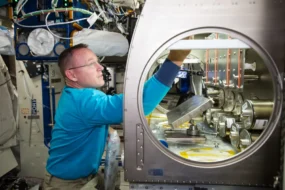If you’ve ever dreamed of being a Mars researcher, now’s your chance.
NASA is looking for citizen scientists to help identify Martian clouds and aid the agency’s understanding of the Red Planet’s atmosphere.
Context: Mars’s atmosphere is ~100X times thinner than Earth’s. In that frigid environment, clouds aren’t made of liquid water, like ours. They’re ice, made from frozen water or carbon dioxide. Any liquid water on Mars just vaporizes, since the air pressure is so low.
But that wasn’t always the case. Billions of years ago, Mars was home to rivers and lakes. So it follows, NASA researchers say, that the planet’s atmosphere used to be thicker. Now, they’re looking to understand just how that changed.
- They have other questions, too: How do clouds change between days, nights, seasons, and years? What makes the Martian atmosphere cold enough to freeze CO2?
For answers…
NASA must identify clouds in the gargantuan 16-year record of Mars Reconnaissance Orbiter (MRO) data. This is where the crowdsourcing part comes in. If you’d like to pitch in, visit the Cloudspotting on Mars project on Zooniverse, a citizen science platform.
There, you’ll look for arches, which represent clouds, in charts of altitude data from MRO. Clouds look like arches because, to the orbiting spacecraft, they “appear to rise from behind the atmosphere to a higher altitude and then fall again,” per the project’s tutorial.
With 1,000+ volunteers involved, the data is getting processed fast, and project organizers have already uploaded a new dataset. For more, NASA has plenty of citizen science opportunities.




